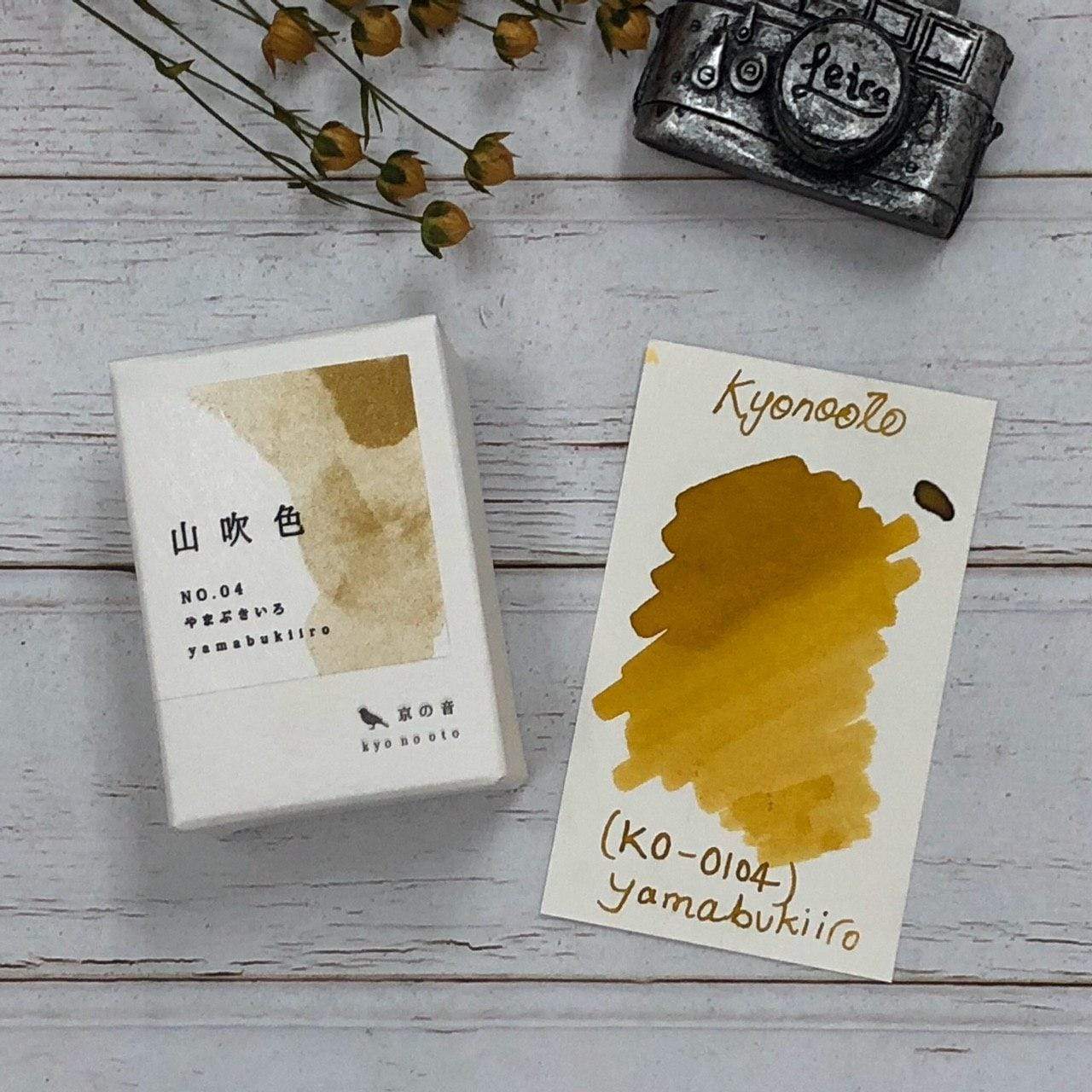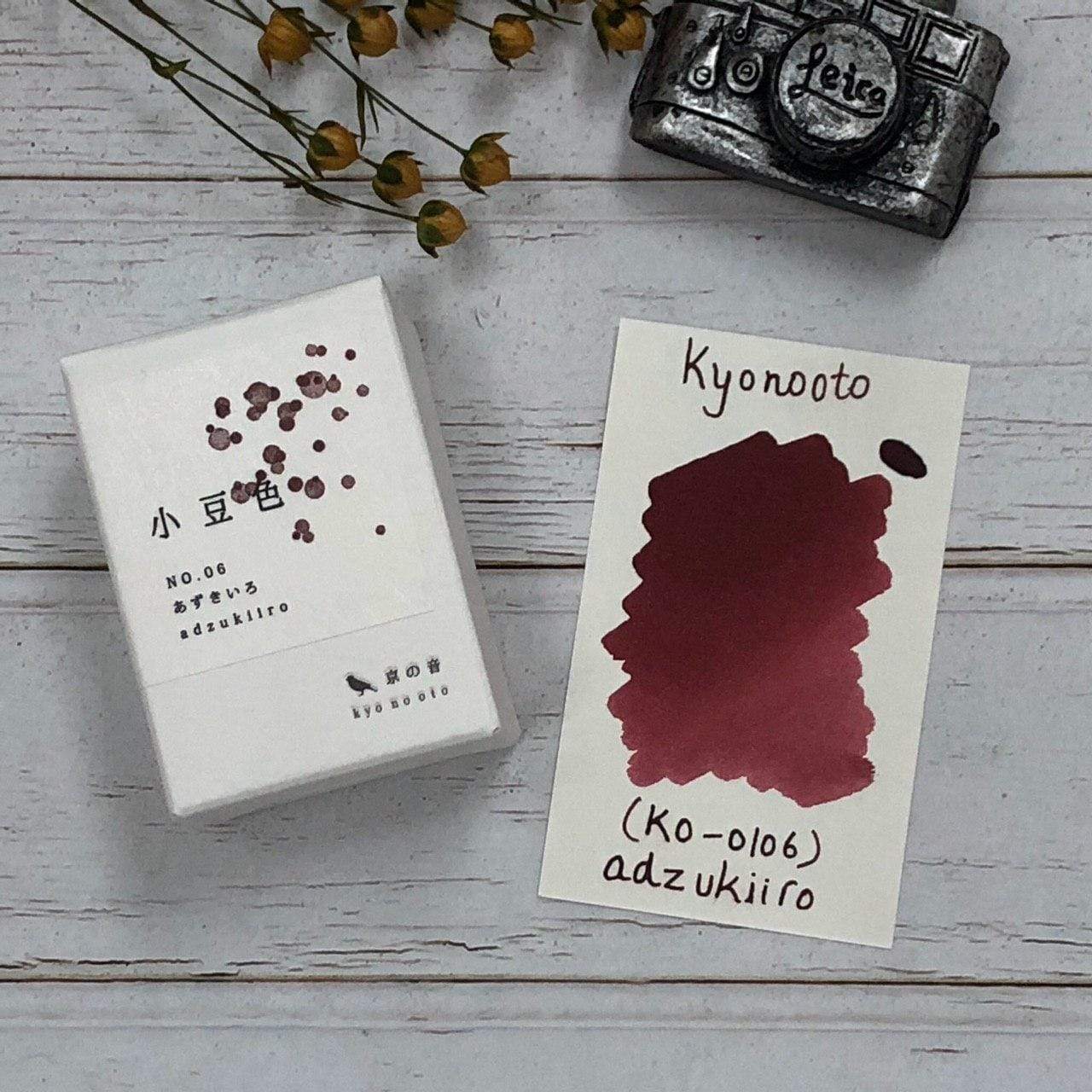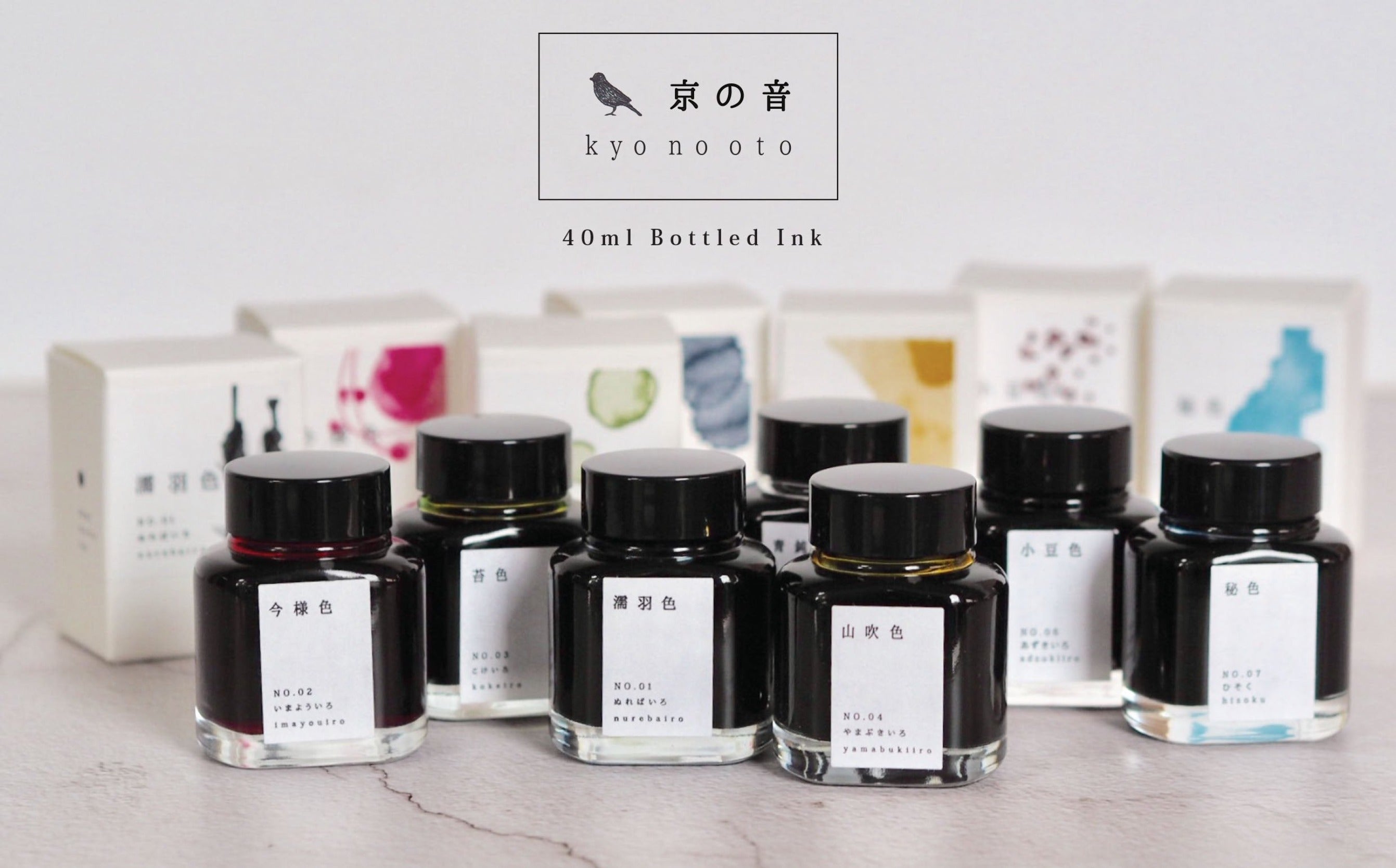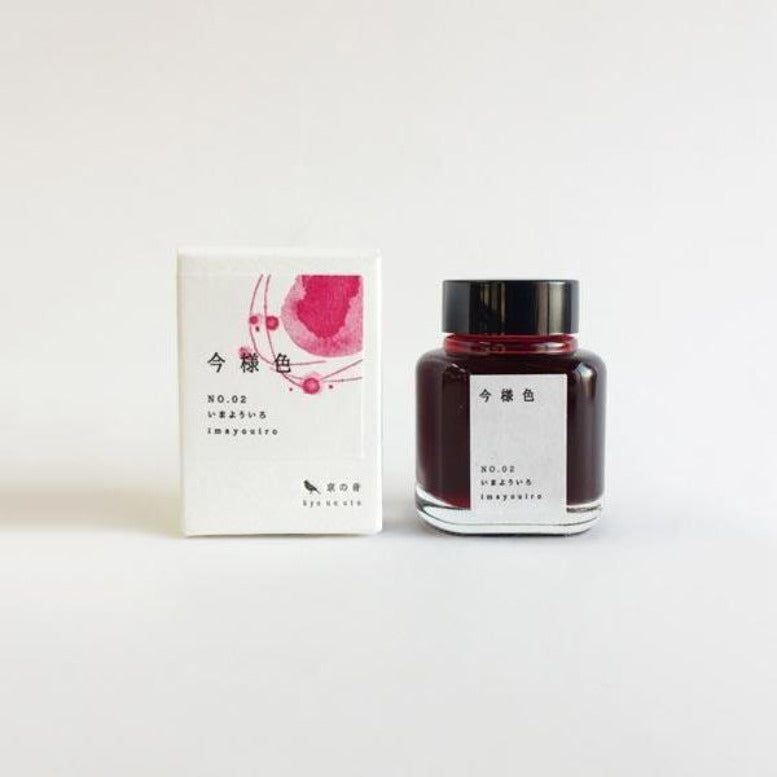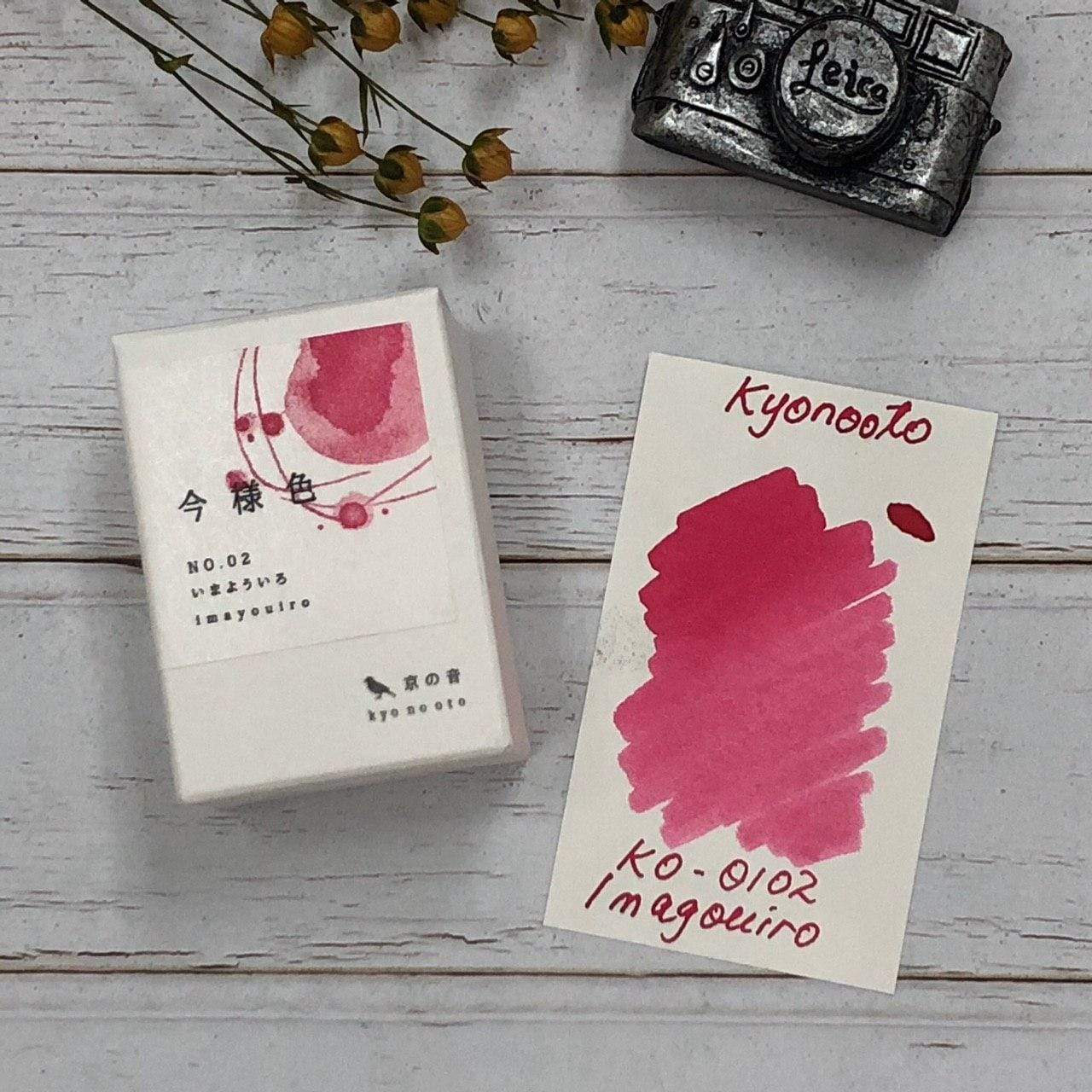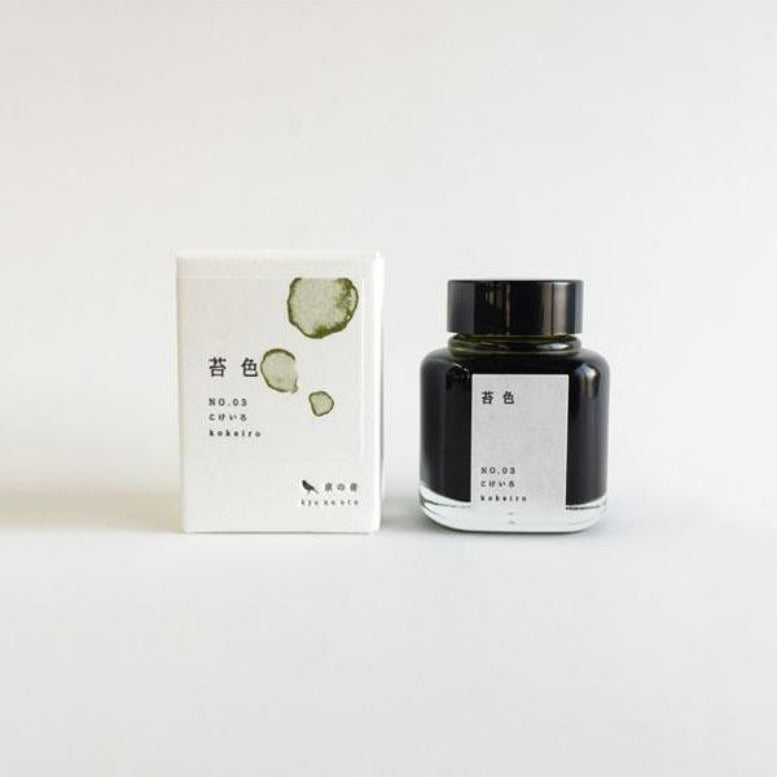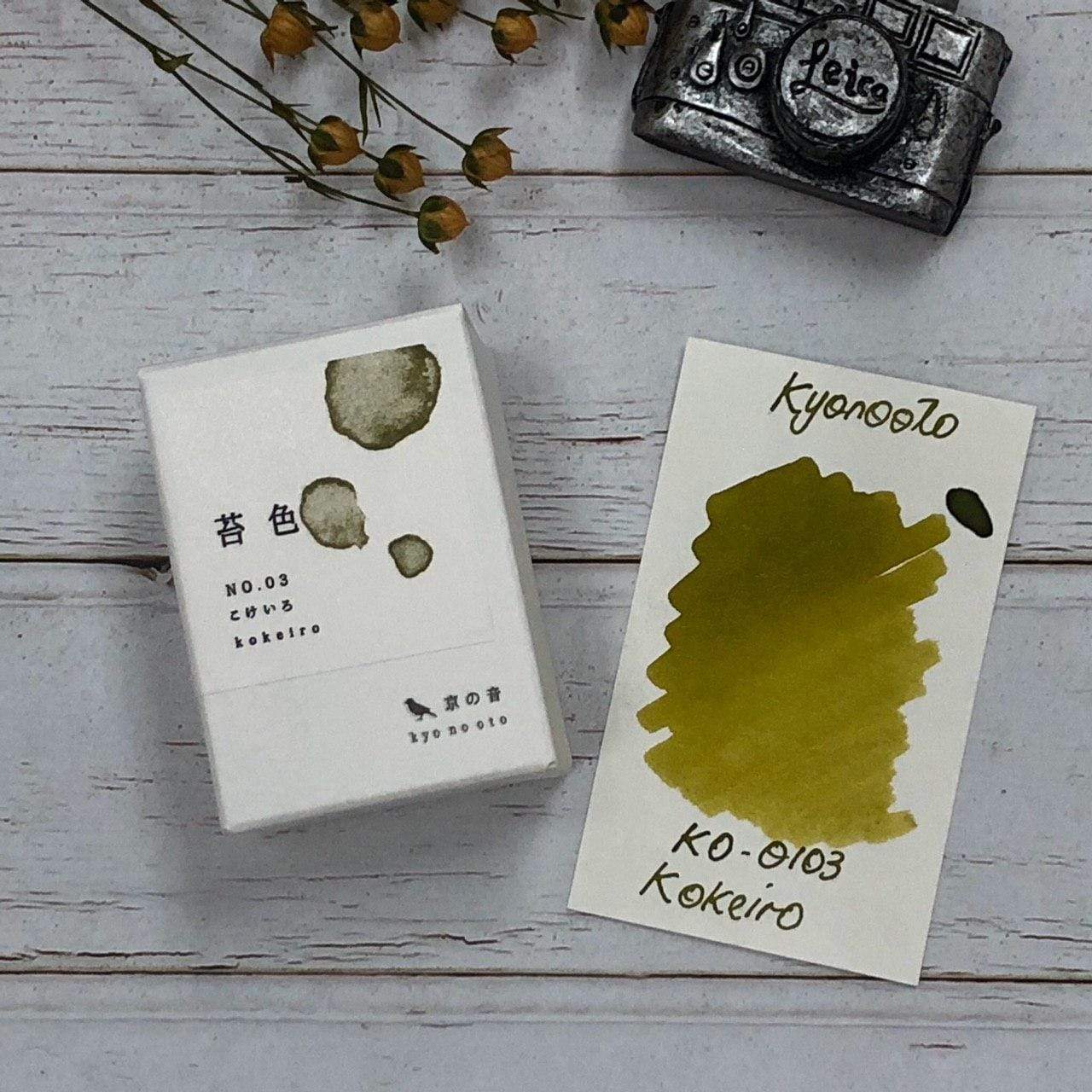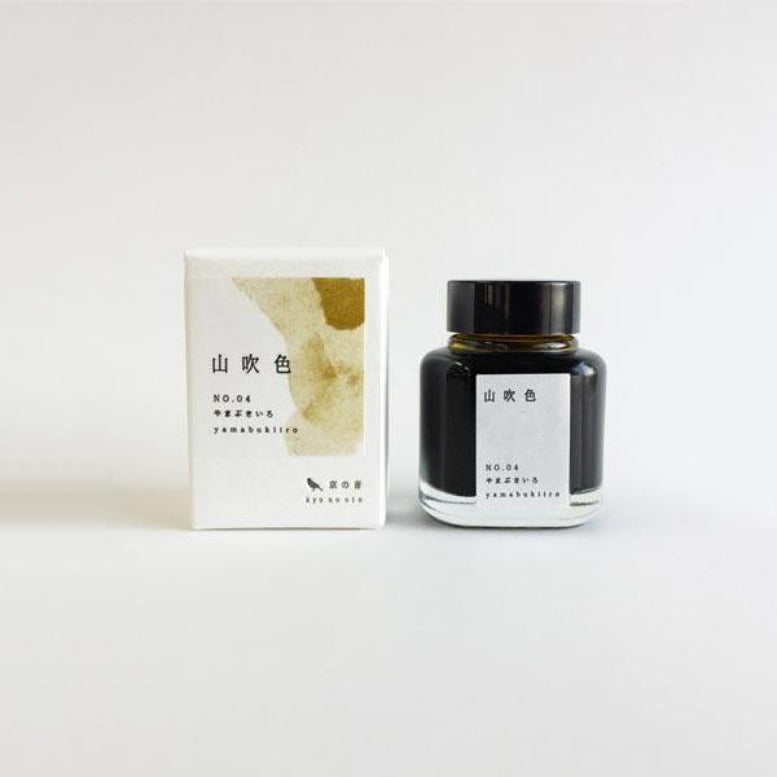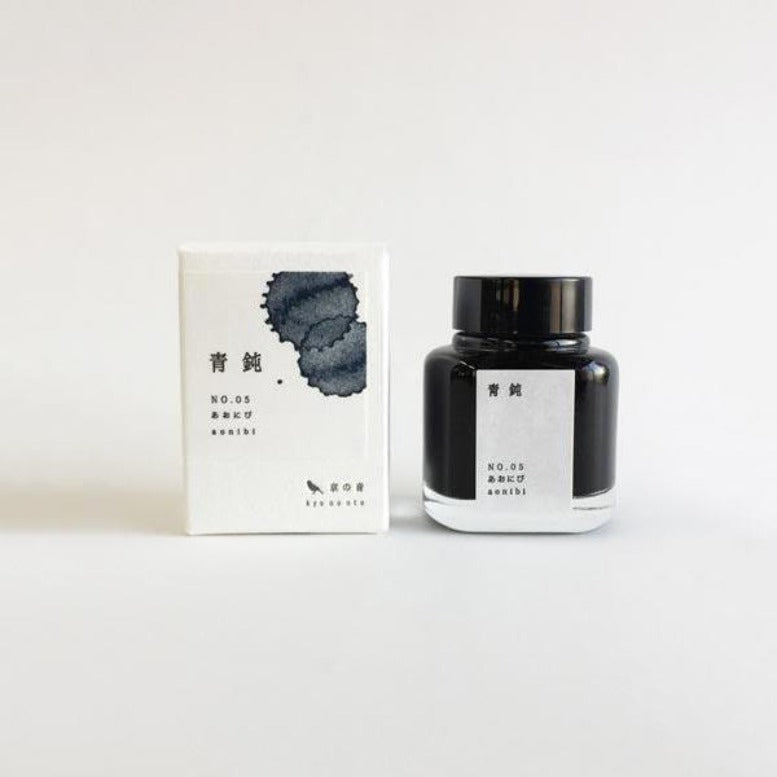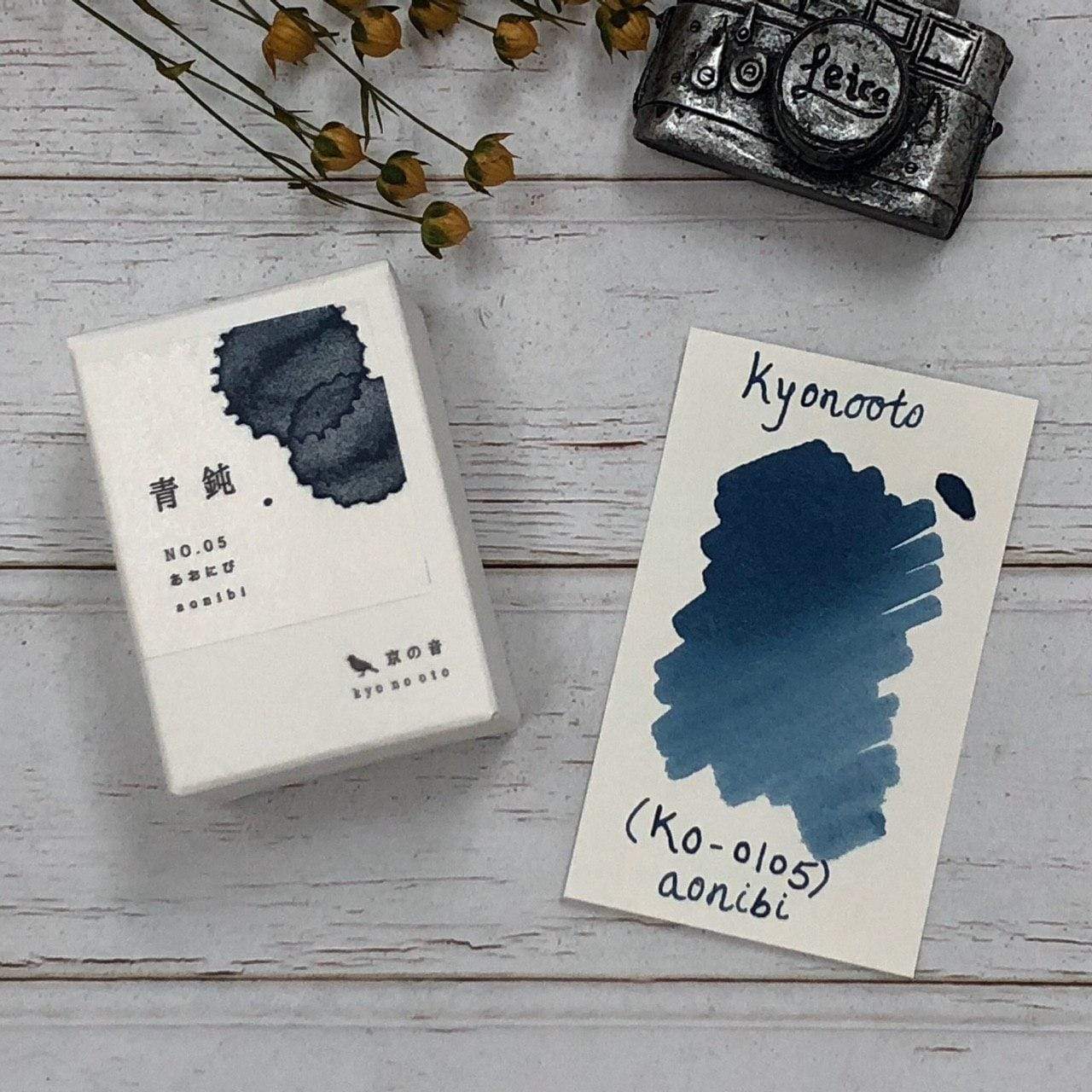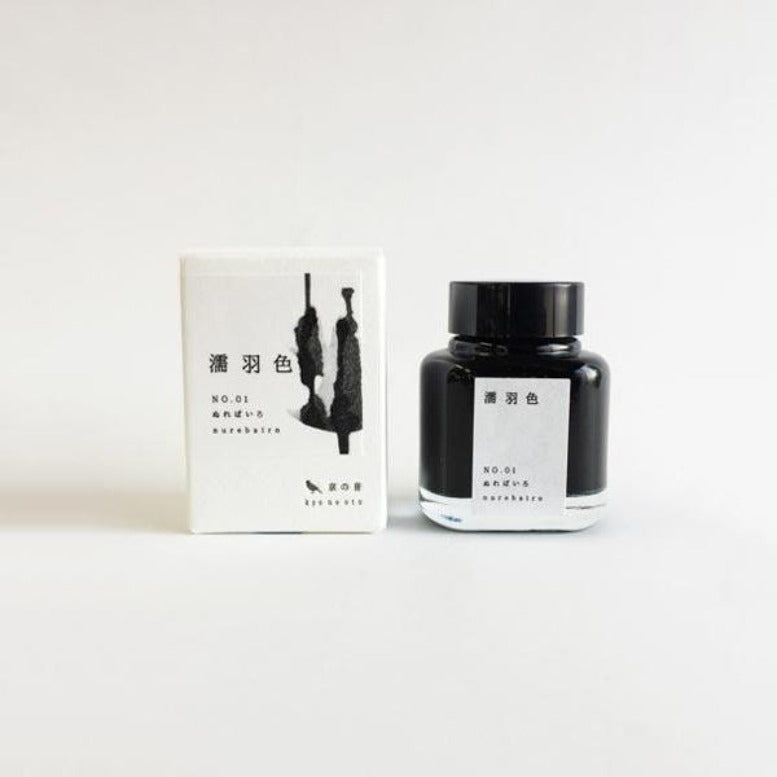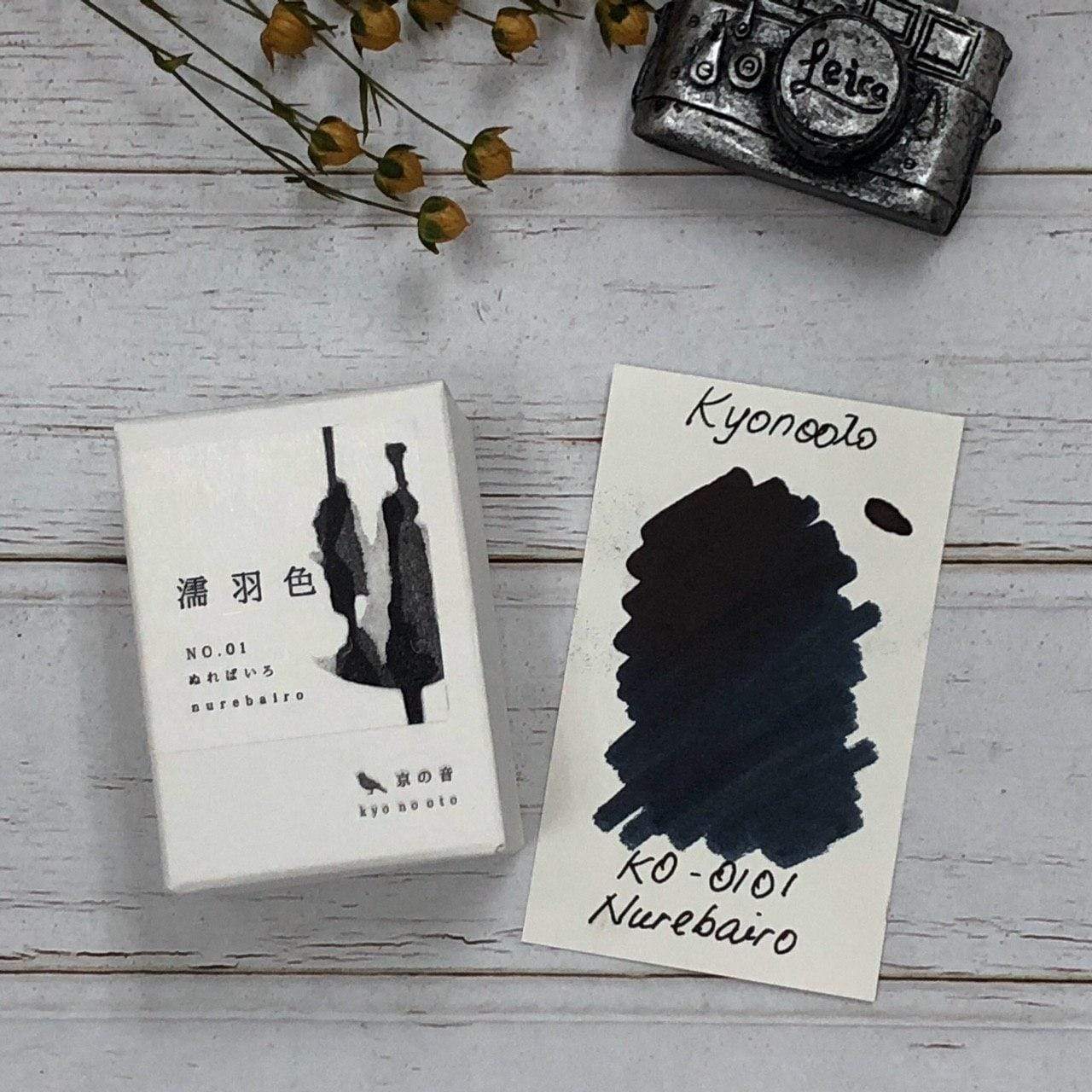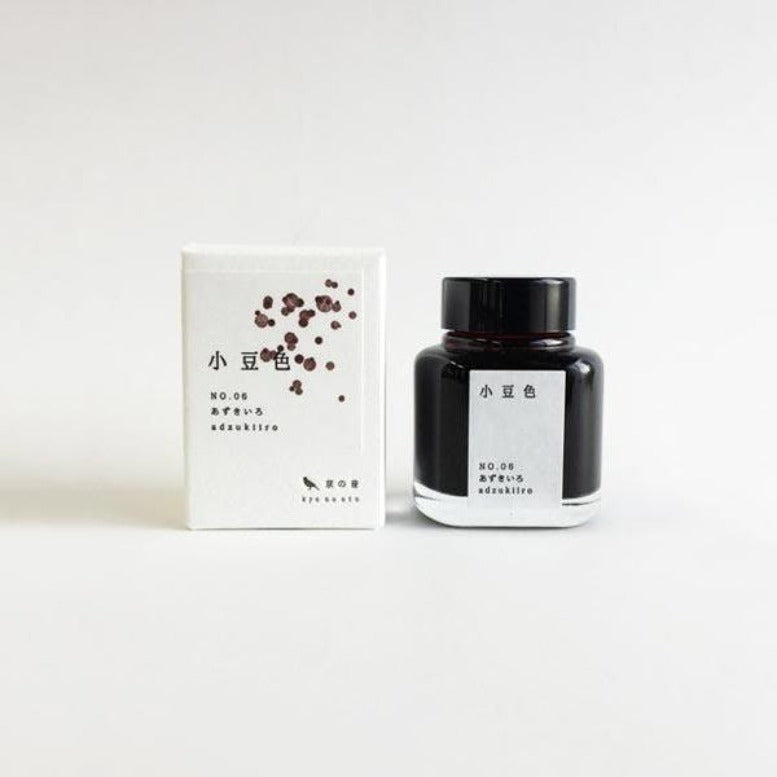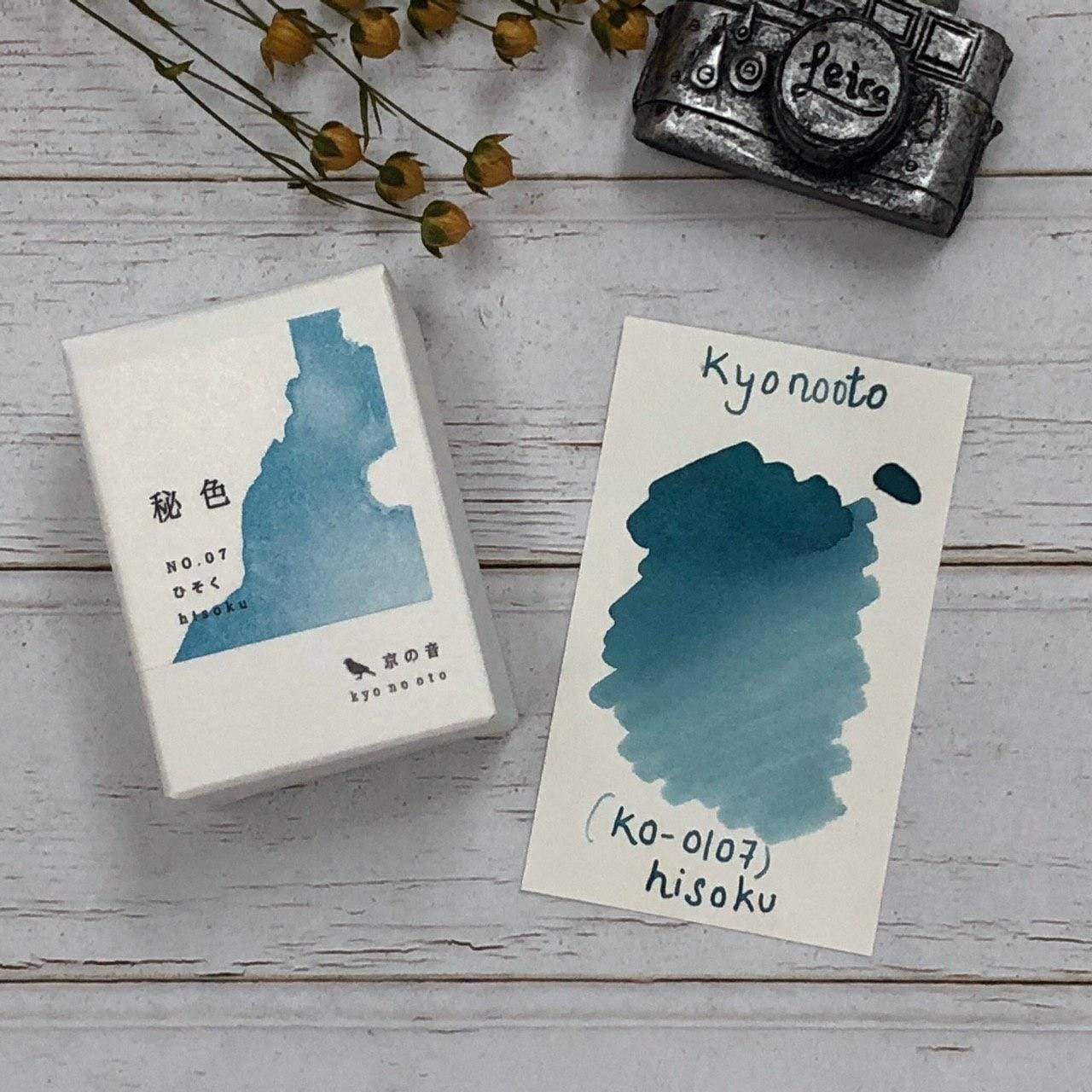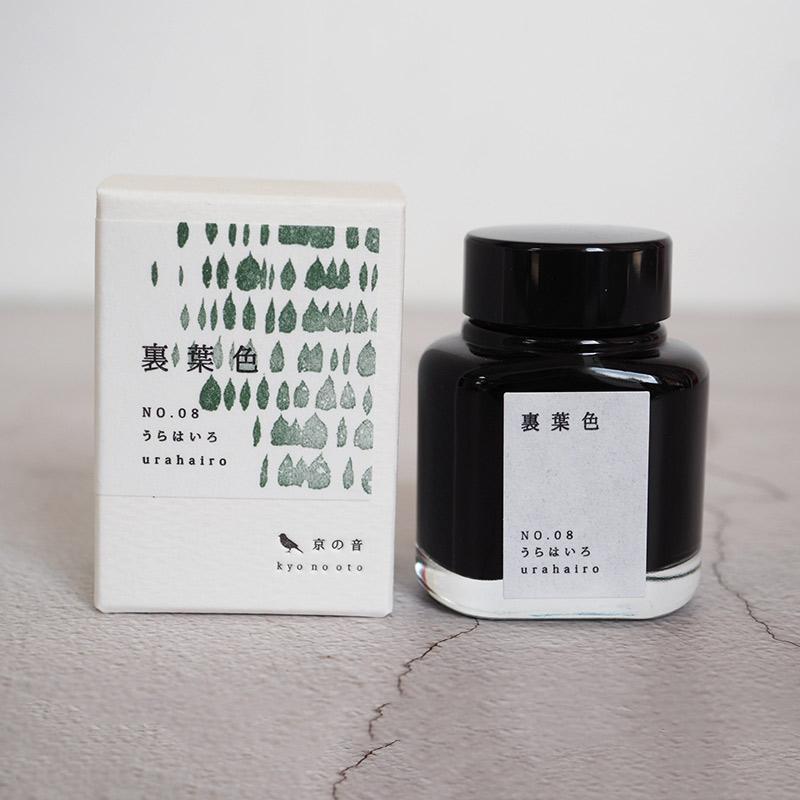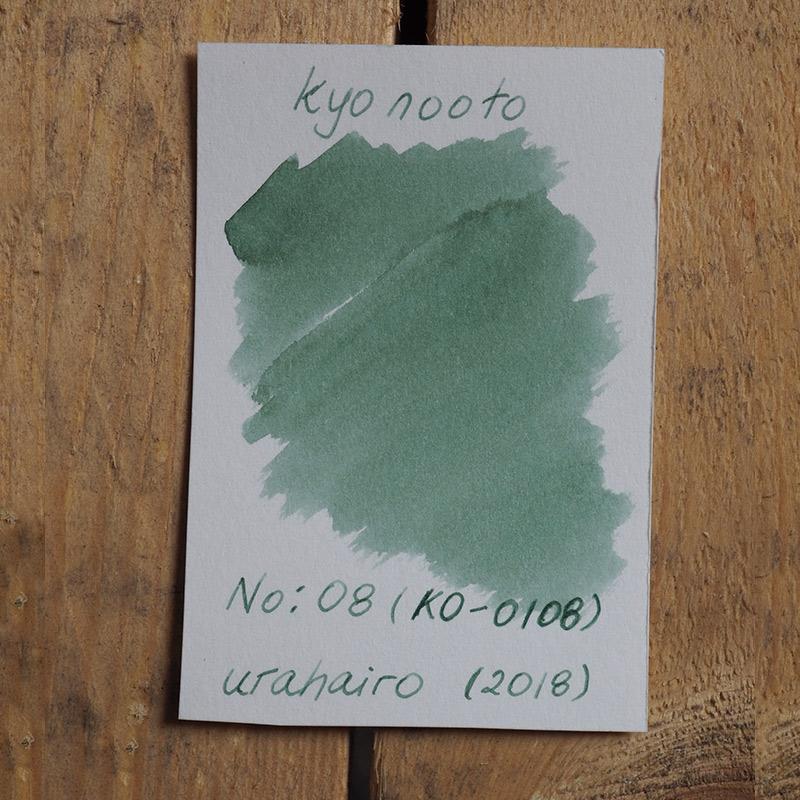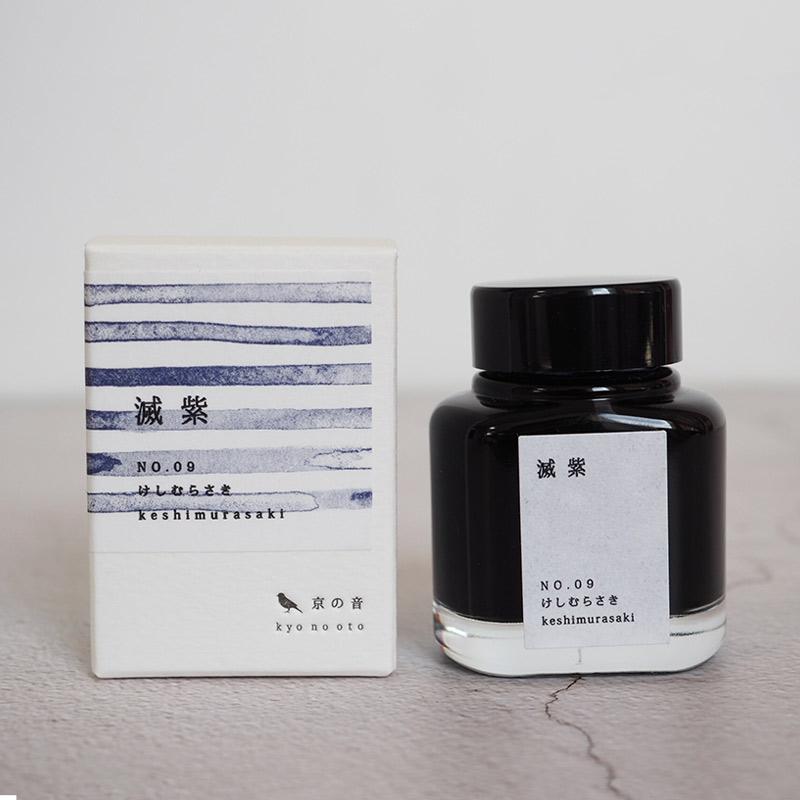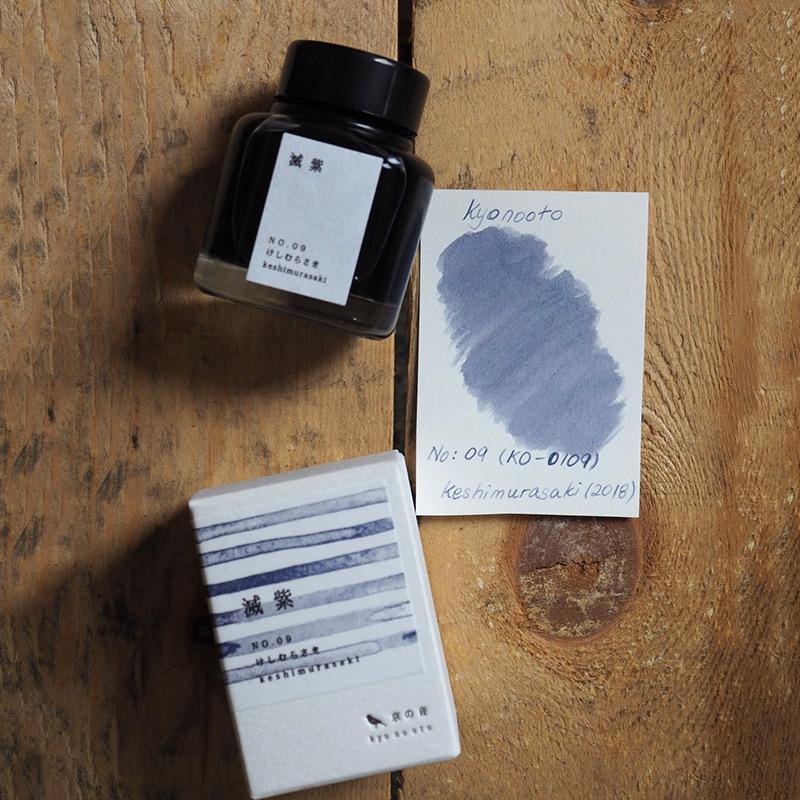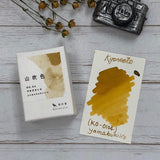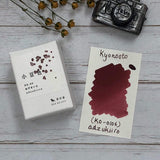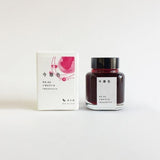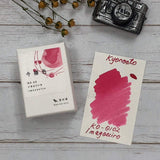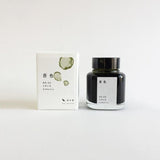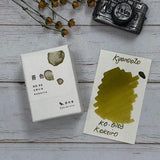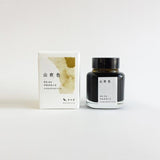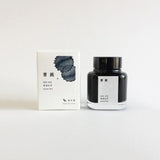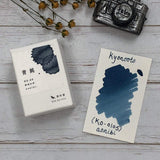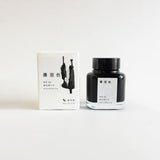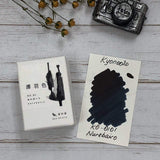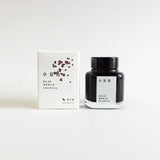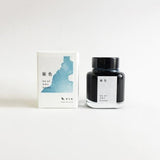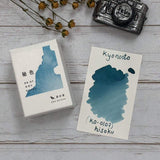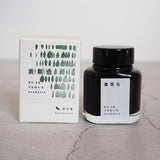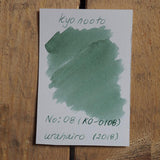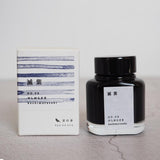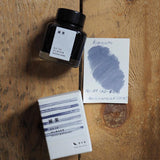Kyo no oto Fountain Pen Bottle Ink 40ml
“Imayouiro” is a safflower red color that had been getting attention in heian era which means what Japanese ancestors called “modern color”. It had been preferred by women.
“Kokeiro” was made being inspired by one of the Japanese aesthetics “Wasabi”. It is located in the garden of Kyoto with the glimpse of culture of Kyoto.
“Yamabuki” is the plant rosaceae kerria genus. This color means a brilliant red tinged gold just like “Yamabuki”. This color has been used since ancient times.
Moon floating in the dark sky, the Kyoto city with silent moonlight. “Aonibi” is the combination of color between pale black and indigo. It represents dignified atmosphere in the deep pale night sky.
* Nurebairo - This cool black ink is inspired by women's glamorous raven-colored hair, which has enchanted many for centuries.
“Adzuki” color refers to reddish brown with purple, just like red bean. Red has been used as a color of prayer since long ago; red rice with red beans is indispensable for celebrations and occasions.
“Hisoku” is a pale green color like the color of a celadon, and this color name is attached because the blue green color with a gray unique ash is a mysterious beauty.
“Urahairo” can be translated to English as underside of a leaf. 'Ura' means 'underside' and 'Ha' means 'leaf. Since the Heianera when Kyoto was the capital of Japan, people loved this color and used it for coloring of textile for Kimono, towels, baby cloths and etc.This ink brings a pale and subdued green just like sunlight falls down though the leaves into your eyes.
This ink brings a shadowy and smoky purple called ‘Keshimurasaki’. ‘keshi’ means ‘offset’ and ‘Murasaki’ means purple. ‘Keshimurasaki’ was typically used for formal kimono dresses during the Heian-era (The 8th century to the 12th century) when Kyoto was the capital of Japan.
SHIPPING POLICY
We ship all orders from our Penang warehouse within the next 1-3 business days from the date you placed your order and confirmed your payment.
Local Shipping (within Malaysia)
We use Pos Laju National Courier for all of our local shipping. The following shipping rate applies:
Peninsular Malaysia: RM5 (Shipping is FREE if your order is above RM50)
Sabah & Sarawak: RM15 (Shipping is FREE if your order is above RM150)
International Shipping
We currently provides FedEx International Economy/Priority as the only international shipping option. Delivery usually takes less than a week, varies by cities. Shipping rates is based on the order weight and destination country.
Please note that your order may be subject to import taxes, customs duties, and/or fees imposed by the destination country. We are not responsible for these additional charges. You will be responsible for these charges as well as making sure to comply with laws and regulations of the destination country.
RETURN POLICY
Our policy lasts 30 days. If 30 days have gone by since your purchase, unfortunately we can’t offer you a refund or exchange. To be eligible for a return, your item must be unused and in the same condition that you received it. It must also be in the original packaging. To complete your return, we require a receipt or proof of purchase.












